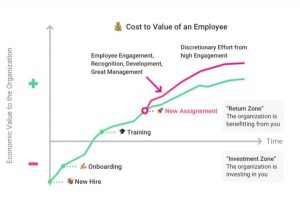Building a quality database for talent analytics is like building a house. Having the tools, materials, and workers is absolutely essential – after all, without any of those, how will the house get built? – but even that isn’t enough. In order to build the house you want, you have to have the plans for the house, know how it’s going to be built, and be able to look at the results after it’s built. The same is true for your talent analytics effort: the metrics you use in your talent acquisition process will influence how your recruiting efforts will perform in the long run.
 There are seemingly countless ways to measure your talent acquisition process as a way to help improve your talent analytics, with the ultimate goal of attracting, hiring, and retaining the best job candidates available. However, a recent article from the Recruiter’s Lounge outlined a simple, effective measurement strategy to build qualitative data for your talent analytics process. This strategy was broken down into the following three sections:
There are seemingly countless ways to measure your talent acquisition process as a way to help improve your talent analytics, with the ultimate goal of attracting, hiring, and retaining the best job candidates available. However, a recent article from the Recruiter’s Lounge outlined a simple, effective measurement strategy to build qualitative data for your talent analytics process. This strategy was broken down into the following three sections:
1. Structure
What it is: Structure is what you’re doing in your hiring process.
Why it’s important: Think back to building a house: your hiring process structure is the equivalent of your blueprints and building specs. Understanding what your candidates are doing – from filling out an online application to the pre-hire assessments they’re taking – is only part of the structure process. You must also evaluated and understand why you have these processes in place. A personality assessment is essential, but what are you measuring in that assessment that would help identify the best candidates available? Keeping track of and measuring your hiring process structure is the first metric you should be keeping track of in your effort to hire better candidates.
2. Process
What it is: The steps your candidates go through in the hiring process, and how they go through them.
Why it’s important: If you have the blueprints to your house (the structure) in place, you must now identify the most efficient way to go about building it – and that’s where process comes into place. Your application process should be as smooth and intuitive to the candidate as it is effective at identifying top talent. Why is this important? Because a cumbersome process can deter candidates from finishing their application with you, and even discourage new candidates from even starting. Furthermore, a well-designed application process ensures that a job candidate’s performance isn’t hindered by difficult, disjointed, or confusing steps. Keeping track of your process ensures you’re able to alter it to make it more effective for your talent acquisition efforts and talent analytics, while making it less burdensome on the candidate.
3. Outcome
What it is: The results of the application process; how the candidate performs as an employee, and how you can adjust your future recruiting efforts based on these results.
Why it’s important: You’ve done it – the house is built and ready to walk around in. As you walk around your newly-built house you might spot some areas you can improve in for next time. The same holds true for talent analytics and hiring outcomes. If you’re measuring your employee’s performance, as well as the hiring process experience, you can determine what you can improve upon to identify better candidates and hire better employees. This also builds a qualitative database for talent analytic efforts you may have in the future, as well as gives you insights into where your hiring process can be altered for better results.
Business & Finance Articles on Business 2 Community(59)





